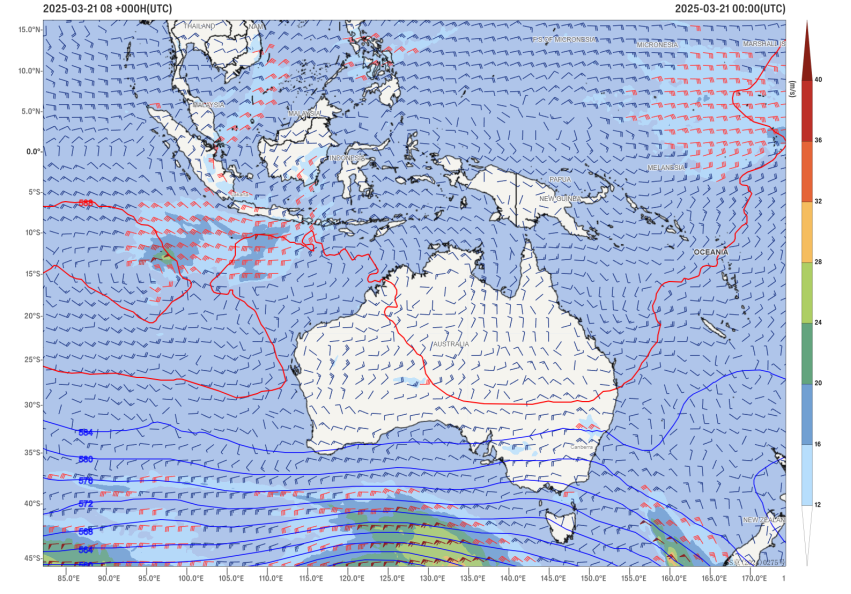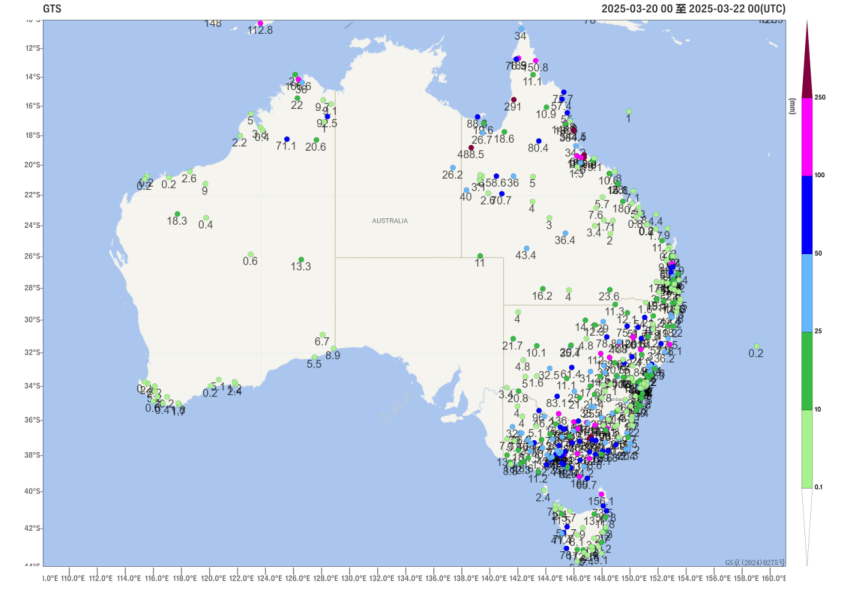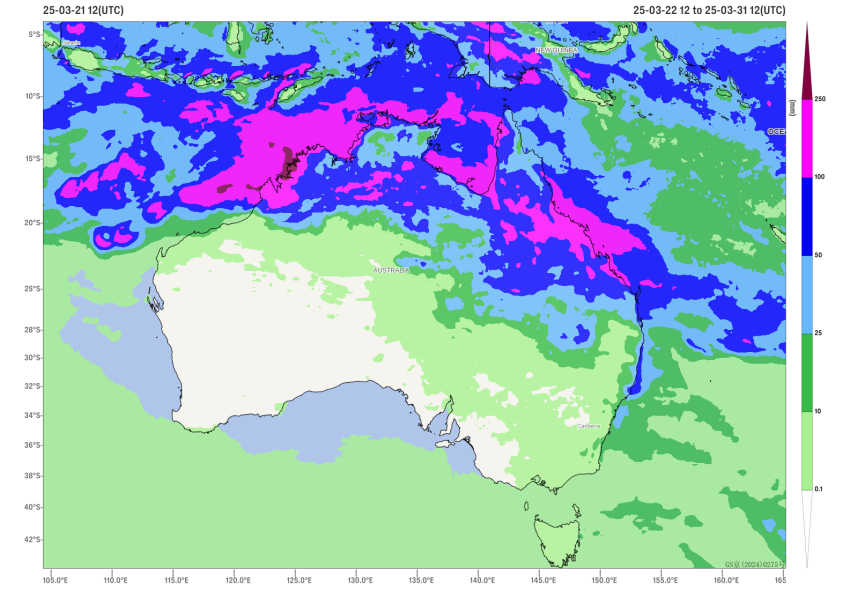Eastern and northern Australia are experiencing persistent rainy weather
Affected by the strengthening of the equatorial flow from the Pacific (Figure 1), heavy to moderate rain occurred in eastern and northern Australia from March 20th to 21st. Coastal areas experienced heavy rain to severe storms, with locally extreme torrential rain. Accumulated precipitation in northern Queensland, central and eastern New South Wales, and most of Victoria ranged from 70 to 150 millimeters, with local amounts exceeding 250 millimeters (Figure 2).
It is anticipated that persistent rainfall will occur in eastern and northern Australia over the next ten days. Heavy to extremely heavy rain is expected in northern Western Australia, northern and eastern parts of the Northern Territory, most of Queensland, and eastern New South Wales, with local areas experiencing extraordinary heavy rain. The accumulated precipitation is expected to be 100–200 millimeters, with local exceedances of 300 millimeters (Figure 3). The period of the strongest rainfall is forecast from the night of the 23rd to the day of the 25th. Attention should be paid to the adverse effects of continuous rainfall, and measures should be taken to prevent potential urban flooding and geological disasters such as flash floods and landslides.

Figure 1. Geopotential height (contours) at 500 hPa and wind field (barbs) at 850 hPa at 00:00 UTC on March 21, 2025

Figure 2. Current Situation Monitoring of Accumulated Precipitation in Australia from March 20 to 21, 2025 (Unit: mm)

Figure 3. Forecast of Accumulated Precipitation in Australia from March 22 to 31, 2025 (Unit: mm)
![]()
Author: Huo Da Reviewer: Zhang Bo
English reviewer:Wang Yi Issue approver:Dai Kan

